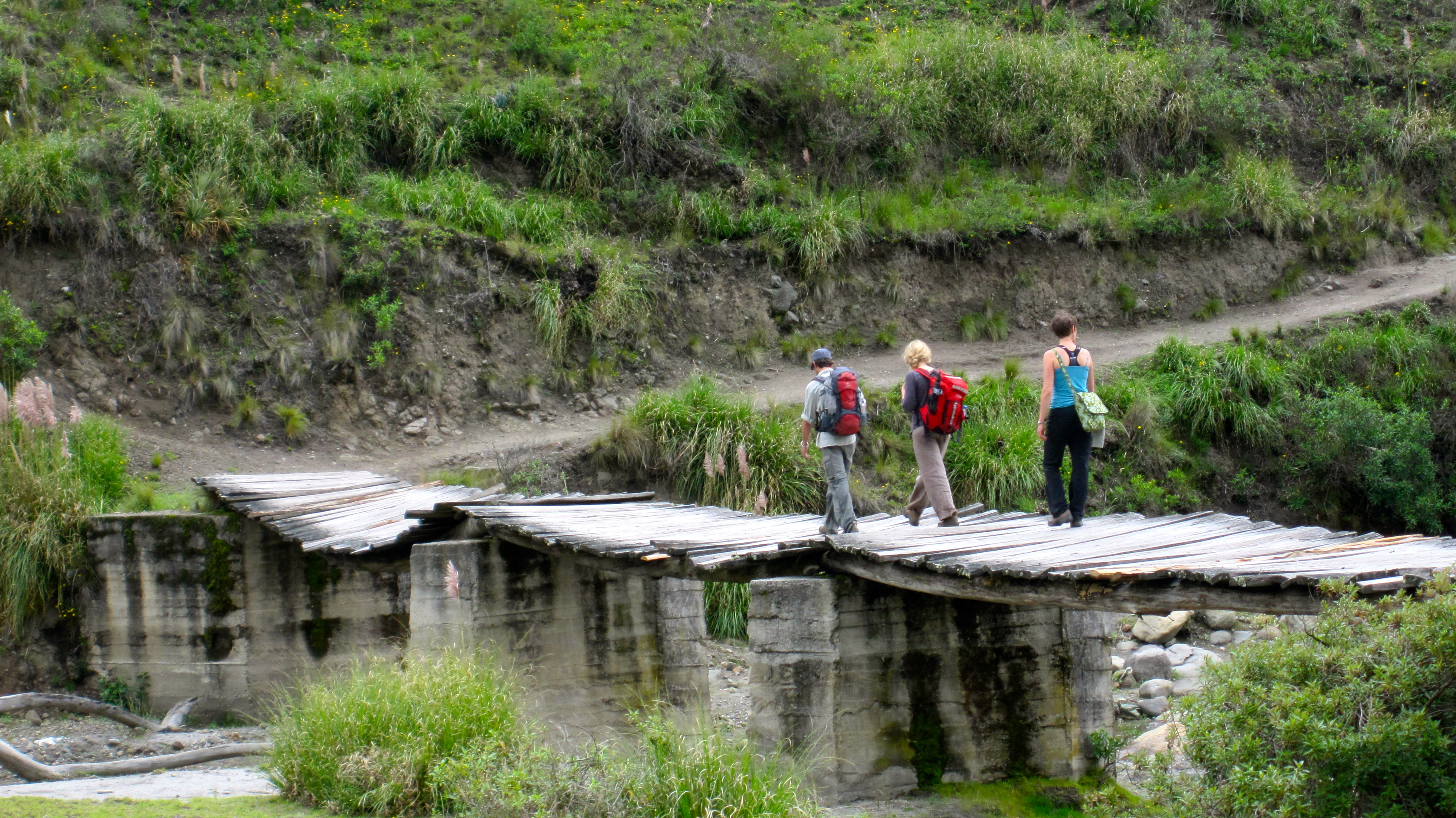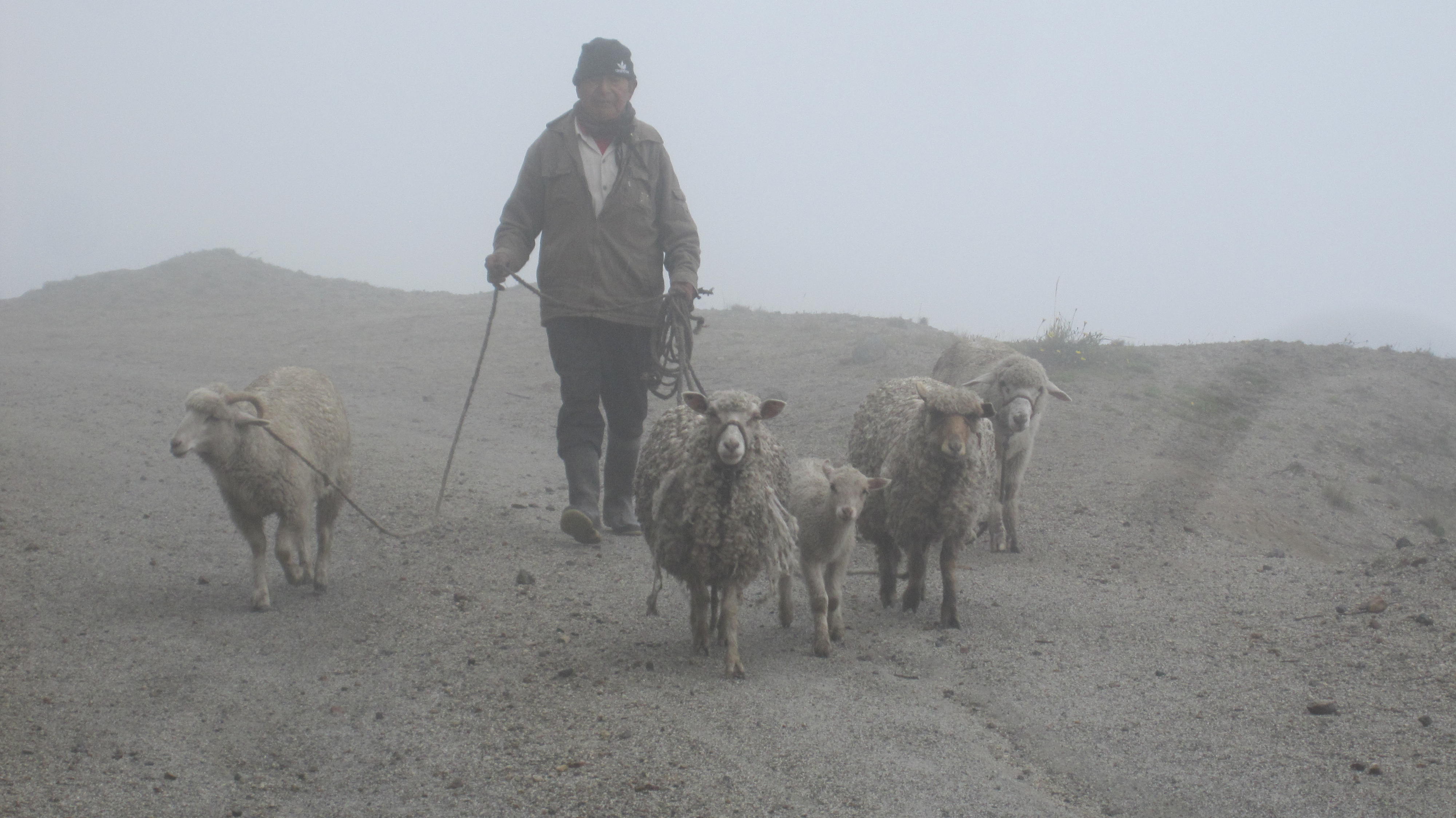The Hacienda Posada de Tigue is a farm and a cosy, welcoming inn. The iron stove
in the entrance hall was radiating heat all day, a real treat on a cold and rainy day.
The Hacienda was the starting point of our hike to Quilotoa, a village on a crater rim
at an altitude of 16, 000 feet.

Hacienda Posada de Tigua with chicken and geese in the foreground

Laundry for drying, despite the constant rain
When the sun appears, the laundry dries very quickly.

Indigenous employee milking a cow

Our hike was leading us through thinly populated area. We crossed shaky wooden
bridges and deep gorges. The indigenous people we met were warm and
welcoming. Often, they showed us the way. It was easy to get lost.

Walking out of a narrow gorge

Tigua is famous for the Tigua paintings. These paintings, done by indigenous
people living around the Quilotoa crater, were originally used do decorate drum
skins. In 1970, Julio Toaquiza had the idea to paint the legends of their ancestors
on canvas. Ever since, the paintings became collector’s items.
Passing a house of the Toaquiza family, we were invited to look at some paintings.
Also, Mr. Toaquiza played the drum and flute for us and told us sacred stories of
the Incas.

Mr. Toaquiza telling us the story of the drum
The beat he played was to commemorate the courageous general of the last Inca
ruler, Atahualpa.
After many hours of hiking, we reached the heights of the Quilotoa Rim. It was cold,
rainy and misty. We lost our way. The Quichua shepherd steeping out of the mist
could not help us. He only spoke his native language and not Spanish.

When we reached the Alpaca hotel in Quilotoa, our cloth was totally wet. The huge
room of the hotel had only one tiny stove. We all cuddled around to warm up.
– Text and pictures contributed by Garyo –
